Lahandi Baskoro's Blog, page 15
February 27, 2020
coal fird tharmal fluid heater
Once the squib will directly lead to leakage of the heat transfer oil, it will cause the heat transfer oil furnace to blast. In order to guard against the onset of this situation, we need to pay attention to the time of the device. We must select the device company that has experience. The welding time should be carefully and carefully. We can not use the screw to connect the interface. The flange connection should be properly used. data of.
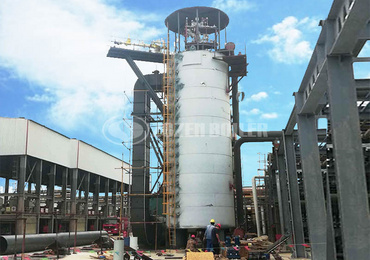
Combined with many years of project experience, the reason why the heat-conducting oil furnace is bursting is: When the quality of the heat-conducting oil in the heat-conducting oil boiler is not pure, the amount of carbon is generally beyond the specification, or there are impurities such as moisture inside, when we conduct heat When the temperature in the oil boiler is too high, the phenomenon of fuel injection or ignition may occur. Perhaps the moisture in the boiler is vaporized due to excessive temperature, resulting in too much pressure in the heat transfer oil boiler and overpressure blasting.
Therefore, our staff must punctually sample and analyze the heat transfer oil we use, timely grasp the quality of the oil, analyze the quality and the cause of the sudden change, and prepare for the cause, and punctuality to the heat transfer oil furnace The amount of heat transfer oil is compensated.
Of course, the heat transfer oil that we add to the heat transfer oil boiler needs to be qualified and dehydrated. If there is any problem with the quality found in this process, we should promptly adopt the corresponding countermeasures to deal with it.
February 25, 2020
cost of thermic fluid heater
Thermal Oil
Thermal oil offers the user the capability of high-temperature operation (up to 600F with organic thermal oils and 800F with certain synthetics) at very low pressures. Due to the low operating pressure and properties of thermal oil, most heaters are built to ASME Section VIII, and a licensed boiler operator is not typically required.
Many people around the world refer to these systems by different names. The phrases thermal oil heater, thermal oil system, thermal oil boiler, thermal fluid heater, thermal fluid system, thermal oil boiler, hot oil heater, hot oil system, and hot oil boiler generally all refer to the same type of closed-loop liquid phase heat transfer system. Note that many people use the terms thermal oil boiler or thermal fluid boiler even though most systems do not involve any type of vaporization.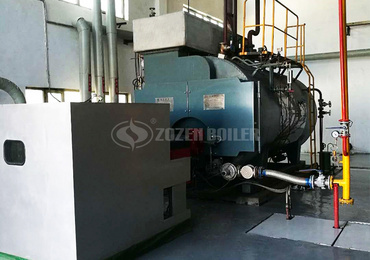
Hot Water & Water-Glycol
Due to its superior thermophysical properties, water is an ideal heat transfer medium. Closed loop liquid phase hot water or glycol solution systems are an excellent choice for indirect process heating up to approximately 300F. Because the water is used in a closed loop with no direct feed water source, heaters are typically built to ASME Section VIII and do not require a licensed boiler operator. Heaters can be built to ASME Section I when required.
Complete Thermal Fluid Systems and Custom Engineering
For customized needs, ZOZEN offers engineered thermal fluid heaters and complete thermal fluid systems. With a broad range of design capabilities, ZOZEN can create a complete system to support any application.
china thermal fluid heater supplier
PIROBLOC thermal oil heaters are adapted to the regulations in force in every territory. We manufacture high range, totally customized thermal fluid heaters to satisfy our customers’ needs: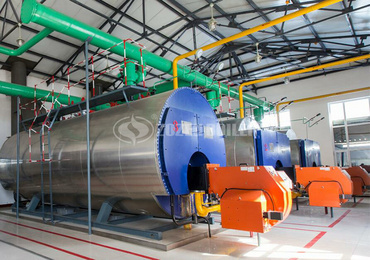
Horizontal or vertical execution. There is no functional difference between a horizontal thermal oil heater and a vertical thermal fluid heater, with the choice being made according to the available space and height in the plant, and ease of maintenance.
Our hot oil boilers provide heat through liquid fuel (HFO, light oil) and/or gaseous (natural gas, propane, etc.). A thermal oil boiler is the main component in a thermal fluid heating system, where a liquid fuel is heated and circulated to provide energy to different energy users within a closed circuit.
Features: Automatic running of the heater and indirect surveillance.
A hot oil heating system has numerous benefits, being the following the main ones:
Safety. Our thermal fluid heaters operate without pressure and water. This avoids the typical problems related to steam heating systems, such as leaks, corrosion, water treatment, etc.
Thermal oil heaters require low maintenance.
Fuel savings up to 20% compared to steam heating systems. A thermal fluid system consists of a closed circuit with minimum energy leaks. At least 90% of the fuel is used in the heating process.
Hot oil heating systems are highly efficient thanks to the temperature uniformity through all the production process.
Biomass thermal fluid heater suppliers in india
We are one of the leading thermic fluid heater manufacturers in China. Our products are known for their performance, durability, reliability, and rust-prevention and low & easy maintenance. All of the equipments are made of best quality raw material and have gone through intense quality check that can withstand high temperature, guarantee superior performance and at most competitive price.
We also provide custom-made and quality thermic fluid heaters to our customers under the supervision of talented team of professionals in compliance with the market standard.
What is thermic fluid heater?
The thermic fluid heater is industrial heating equipment. This equipment is used where only heat transfers are preferred in place of pressure.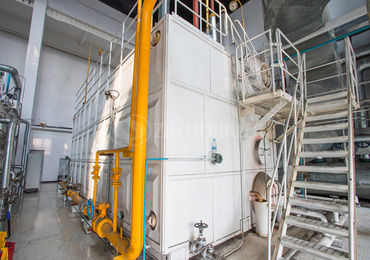
Working of thermic fluid heater
In this system, the thermic fluid is spread in the entire system for the transfer of the heat to the required processes.
During combustion, the thermic fluid heats up and the fluid carry and reject this heat to the desired fluid at the end of the processes. After the rejection, this fluid comes back to the thermic fluid heater and this cycle is repeated.
Boiler Vs Thermic Fluid Heater
You use boilers for heating water and producing steam. Thermic fluid heaters are used only to heat the water. It may or may not produce steam. The thermic fluid passes through the tubes instead of flue gases.
Features of our thermic fluid heater
Being one of the topmost manufacturers of thermic fluid heater in Chennai, we have the vast experience in producing superior quality products which have the ability to operate at all varied temperatures. As our equipments have been manufactured with latest technologies and first-rate raw materials by highly-trained and qualified professionals, they’re highly recommended to operate in any condition, even in most adverse conditions.
November 7, 2019
Heat transfer oil boiler is environmentally friendly and efficient
The layout of the heat transfer oil boiler is inseparable from the two raw materials. One is that we have a well-known heat transfer oil, the other one is the circulating pump used on the heat transfer oil boiler. The other one is The centrifugal pump is determined by its layout. And our heating pipes may be the ones that are usually used in heating equipment, because the working principle of the circulating pump is to limit the material.
Because the heat transfer oil boiler is a heater capable of infinite thermal cycling, it is because of its efficiency and environmental friendliness. Trust companies that already use this device to have more revenue.
The high efficiency of this equipment for heat-conducting oil furnaces has been well received by many companies. What is more, its environmental value is worthy of our praise. The characteristics of abundant incineration and abundant heat make the environment less polluted and heated. Relatively enough. According to some of the above advantages, the heat transfer oil boiler is now used in many occupations, such as food occupation, building materials occupation, etc.
October 29, 2019
thermal oil boiler system
PIROBLOC thermal oil heaters are adapted to the regulations in force in every territory. We manufacture high range, totally customized thermal fluid heaters to satisfy our customers’ needs:
Horizontal or vertical execution. There is no functional difference between a horizontal thermal oil heater and a vertical thermal fluid heater, with the choice being made according to the available space and height in the plant, and ease of maintenance.
Our hot oil boilers provide heat through liquid fuel (HFO, light oil) and/or gaseous (natural gas, propane, etc.). A thermal oil boiler is the main component in a thermal fluid heating system, where a liquid fuel is heated and circulated to provide energy to different energy users within a closed circuit.
Features: Automatic running of the heater and indirect surveillance.
A hot oil heating system has numerous benefits, being the following the main ones:
Safety. Our thermal fluid heaters operate without pressure and water. This avoids the typical problems related to steam heating systems, such as leaks, corrosion, water treatment, etc.
Thermal oil heaters require low maintenance.
Fuel savings up to 20% compared to steam heating systems. A thermal fluid system consists of a closed circuit with minimum energy leaks. At least 90% of the fuel is used in the heating process.
Hot oil heating systems are highly efficient thanks to the temperature uniformity through all the production process.
October 23, 2019
Heat transfer oil used in heat transfer oil boilers
Main features of heat transfer oil used in heat transfer oil boiler
The heat transfer oil has the characteristics of heat-resistant cracking and chemical oxidation, high heat transfer efficiency, fast heat dissipation and good thermal stability. As a heat transfer medium for industrial oils, heat transfer oils have the following characteristics: a high operating temperature can be obtained under almost normal pressure conditions. In other words, the working pressure and safety requirements of the high-temperature heating system can be greatly reduced, and the reliability of the system and equipment can be improved; the process requirements of heating and cooling at different temperatures can be met in a wider temperature range, or can be the same The same system is used in the system. The heat transfer oil simultaneously meets the requirements of high temperature heating and low temperature cooling.
In other words, the complexity of the system and operation can be reduced; the water treatment system and equipment are eliminated, the thermal efficiency of the system is improved, and the maintenance workload of equipment and pipelines is reduced. That is to say, the initial investment and operating costs of the heating system can be reduced; in the case of system leakage caused by an accident, the heat transfer oil may burn when exposed to an open flame, which is a problem compared to the heat transfer oil system. However, in the absence of leakage, since the heat transfer oil system operates under low pressure conditions, its operational safety is higher than that of water and steam systems.
Compared with the molten salt of other types of high temperature heat transfer media, the heat transfer oil has an advantage over the heat transfer oil in the price and service life of the heat transfer medium at an operating temperature of 400 ° C, or higher, but other aspects. Obvious disadvantages, especially in terms of the complexity of system operation.
Chemically stable, not as easy to burn as light oil. From the point of view of use and safety, its main feature is
1. Better thermal stability, less coking and longer service life in the permissible temperature range.
2. Good thermal conductivity, fluidity and pumpability in the permissible temperature range.
3. Low toxicity, no odor, no corrosion equipment, and little impact on the environment.
October 21, 2019
Heat transfer oil boiler quality
How to ensure the quality of the heat transfer oil boiler? This article explains the following five aspects.
1. The manufacturer must have a manufacturing license
The manufacturer of the heat-conducting oil furnace must have a manufacturing license, and the manufacturer using the heat-conducting oil furnace must also purchase a heat-conducting oil furnace product produced by a manufacturer with a production-qualified heat-conducting oil furnace.
2. Strength calculation and structural design of the heat transfer oil furnace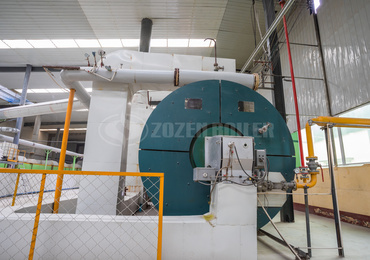
All gas phase furnaces are under pressure, while the liquid phase furnaces of the heat transfer oil electric heating furnace are divided into two types: pressure-injected and non-pressure-suction. The components of the organic heat carrier furnace shall be calculated according to the current boiler strength calculation standard regardless of the pressure or not. The design pressure is 0.3 MPa and not less than 0.59 MPa. In addition to the design pressure, the calculation formula, the selection of the parameters, and the determination of the coefficients are all carried out according to the corresponding calculations of the “Strength Calculation of Pressure Components of Water Tube Boilers” and “Strength Calculation of Pressure Components of Shell and Shell Boilers”. The structural design of the electric heating and heat transfer oil furnace and the mechanical performance test of the product weld must meet the requirements of the “Safety Technical Supervision Regulations for Organic Heat Carrier Furnace”.
3. Pressure test
The heat transfer oil furnace is subjected to a pressure test after assembly of the manufacturing unit and after installation and repair of the unit of use.
The pressure test of the electric heating heat transfer oil furnace is divided into a hydraulic test, a hydraulic test and a gas tightness test. Whether it is a gas furnace or a liquid furnace for electrically heating the heat transfer oil furnace, the hydraulic pressure test is carried out in the manufacturing unit, and the hydraulic test may only be carried out in the use unit, and the water pressure test is not suitable. For the gas furnace of the electric heating heat transfer oil furnace, the airtightness test is also carried out in the manufacturing unit and the use unit to check the sealing condition of the non-welded joint portion. The airtight test method and requirements of the electric heating heat transfer oil furnace are carried out in accordance with the relevant provisions of the pressure vessel. For the liquid furnace of the electrically heated heat transfer oil furnace, the air tightness test is not required.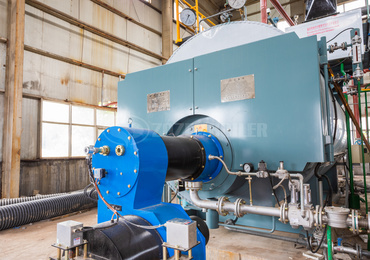
The test pressure of the airtightness test of the electric heating heat transfer oil furnace takes the working pressure of the gas furnace; the hydraulic pressure test pressure is 1.5 times the working pressure of the organic heat carrier furnace.
4. Strictly control the welding quality of electric heating and heat transfer oil furnace
Since the organic heat carrier of the electric heating heat transfer oil furnace is easy to leak and burn easily, the welding requirements of the organic heat carrier furnace for the electric heating heat conduction oil furnace are higher than those for the water medium medium boiler, and the welding quality of the electric heating heat conduction oil furnace should be strictly controlled. The welding requirements and non-destructive testing of the electric heating heat transfer oil furnace must meet the requirements of the “Safety Technical Supervision Regulations for Organic Heat Carrier Furnace”.
5. The safety device for electric heating and heat transfer oil furnace should be complete, sensitive and reliable.
The selection, installation, inspection and maintenance of safety valves, liquid level gauges, pressure gauges, thermometers, sewage devices, expanders and automatic protection devices for electric heating and heat transfer oil furnaces must meet the requirements of the “Safety Technical Supervision Regulations for Organic Heat Carrier Furnaces”. Provisions.
Five precautions for using hot water boilers
Summarize the five precautions when using coolants in oil boilers
1. The heat transfer oil boiler uses large oil for heat transfer as a heat transfer boiler with oil and gas coolant. The system should be equipped with expansion tanks, measuring instruments and control devices.
2, must be carefully checked during use, strictly waterproof, acidic, alkaline and low boiling substances leak into the use of the system, the system must be equipped with a filter device to avoid debris, to ensure oil purity.
3. When the heat transfer oil boiler has been commissioned, start the circulation oil pump at the beginning of the operating phase. After half an hour of operation, the ignition temperature rises again. At initial use, the temperature should be slowly raised. The temperature rises to about 20 ° C per hour, and when the temperature rises to 180 ~ 200 ° C., Keep it for a while before it can be brought into normal use.
4. After six months of use, an oil analysis should be carried out. After prolonged use, if it is found that the heat transfer effect is poor or other abnormal conditions, the oil should be analyzed and added or replaced in accordance with the results of the analysis.
5. It is forbidden to use an oil boiler with heat transfer during overheating in order to ensure a normal service life and thermal conductivity of the oil.
October 17, 2019
Main features of the operation of the heat transfer oil furnace
Gas heat conduction oil furnace technical performance and use The equipment has low pressure (≤0.4MPa) stable operation, computer automatic control, thermal efficiency up to 90%, vertical gas (oil) heat transfer oil furnace is widely used in petrochemical, oil and fat data, Building materials industry, textile printing and dyeing, food, plastics, rubber, pharmaceuticals and other occupations, is a new type of ambition heating equipment.
The gas-heating oil-fired boiler body has a compact heating surface, the heating surface is composed of inner and outer densely arranged disks, the inner coil is a radiation heating surface, and the outer coil and the outer coil form a convection heating surface. The boiler consists of an upper body and a lower incineration chamber, and the site is combined on site. After the incineration is fully incinerated in the incineration chamber, after the radiation is heated to absorb most of the heat, the high-temperature flue gas enters the convective heating surface to exchange heat, and after exiting the boiler, the air required for the boiler to be incinerated is heated in the air preheater, and then passed through the precipitator. The flue gas is sent to the chimney by the induced draft fan and discharged into the atmosphere.
Lahandi Baskoro's Blog



